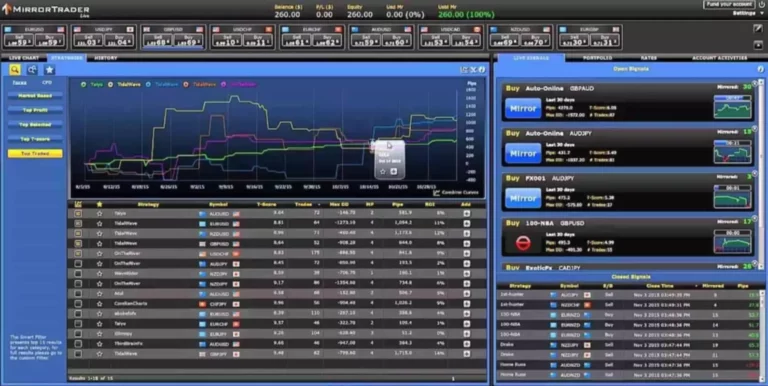IXBRL inserts digital versions of reporting standards as a core part of the reporting process. The direct link to the data standard makes compliance much easier to achieve and enforce, and delivers provable adherence to global financial reporting requirements. This brings iXBRL tags alongside graphically rich layouts, pictures and charts to create informative and functional digital reports. By combining human-readable formats with machine-readable data, it enhances transparency and facilitates better data analysis. As companies continue to adopt this innovative format, the benefits of iXBRL will become increasingly apparent, paving the way for a new era of financial reporting. IXBRL is well proven, with many financial and regulatory reporting regimes mandating the use of the format globally.
IXBRL is a globally recognized reporting language used to report Annual Financial Statements (AFS) in a standardized format. CIPC mandated iXBRL for all qualifying entities from 1 July 2018 to ensure a smooth analysis, preparation, and communication of business information to all stakeholders in a single format. XBRL is a global standard for exchanging financial information, but the problem with XBRL is that it is only machine-readable. The basic idea for the introduction of this format is to allow filers to retain the original view of the source document when filing an XBRL document. IXBRL is significant because it highlights the SEC’s commitment to structured data. XBRL is an XML-based standard for tagging financial data that is searchable, thus enhancing the transparency of and accessibility to the data.
- XBRL is a global standard for exchanging financial information, but the problem with XBRL is that it is only machine-readable.
- The iXBRL viewer enables human readers to easily navigate, search and filter using the XBRL tags embedded within the document.
- Since then, most companies file their company tax returns online in iXBRL, including financial accounts and computations.
- It offers a comprehensive solution that enables the conversion and creation of iXBRL documents using a variety of source document formats including Microsoft Word, Microsoft Excel, and Adobe Acrobat (PDF).
- This dual expertise is crucial for a thorough examination of the iXBRL document, ensuring that all financial data is represented accurately and consistently.
- Live Roll outSouth Africa is one of the first countries in Africa to introduce this Financial and Regulatory reporting technology.
Why has the reporting format changed?
- The primary purpose behind the CIPC’s drive to introduce iXBRL was to simplify the financial reporting information electronically for South African-based companies.
- There are plenty of tools and software out there designed to help with the transition.
- Whether you hire an in-house expert on an outsource service provider, ensure that they have the requisite software requirements to handle multiple accounts at once.
- The SEC includes an iXBRL viewer in the EDGAR system, enabling anyone with a recent standard internet browser to view publicly available iXBRL filings right within the EDGAR system.
It became more than necessary for the CIPC to implement structured data reporting in South Africa to enable easier access and analysis of financial data. IXBRL is the de facto standard for digital collection of complex business data, such as financial statements. It transforms data collections previously carried in paper or PDF to deliver structured data ready for automation and AI processing. Whereas XBRL is usually used to produce reports with fixed data points like a form or template, iXBRL is often used with extensible taxonomies. These allow businesses to report all material disclosures, as required by principle-based accounting standards, even if they are unique to the company.
Since the introduction of this mandate, companies are required to familiarize themselves with all the aspects of the iXBRL program by retaining relevant information on the CIPC website. ixbrl instance cipc Considering the benefits of iXBRL, it is definitely the way forward for South African companies. As a non-profit company filing an Annual Financial Statement (AFS) with the CIPC in South Africa, it is mandatory to employ the iXBRL format.
iXBRL Tagging and Digital Financial Data
The elements that are specifically required for CIPC reporting requirements have been added to the base IFRS taxonomy structure, including the disclosure for Financial Accountability Supplement (FAS). The taxonomy contains 16 entry points for IFRS-FULL, 16 entry points for IFRS-SME, and 2 entry points for GRAP financial reports, 34 entry points in total. The entry points are designed to cover the reporting scenarios taking into account the methods of presentation used and reports specific to the categories of the filers. Towards enhancing the filing efficiency of Annual Financial Statements and improving the quality of information submitted, CIPC adopted iXBRL as the underlying information standard in the AFS.
CIPC, South Africa iXBRL Programme
This was when digital transformation moved to the forefront of many organizations. We can convert financials prepared in Adobe Acrobat (PDF), Word, Excel, or HTML. We don’t constrain you to templates and cater to all kinds of financial reporting formats. A dependable and reputed iXBRL instance partner like DataTracks is all you need.
Reporting companies use software like the True North Data Platform to review these reports or to produce embedded viewers for publication on their website. The primary distinction between XBRL and iXBRL lies in their format and presentation. XBRL operates as a separate file format, encoding financial data exclusively for machine readability. In contrast, iXBRL integrates XBRL tags into HTML documents, combining the strengths of both XBRL and HTML to deliver a format that is both machine-readable and human-readable.
Our Software
Corporation Tax customers will have to file their Company Tax returns online, with accounts and computations in Inline eXtensible Business Reporting Language ( iXBRL ) format. Many customers will not need any knowledge of XBRL , or what needs to be tagged. For most companies and organisations, accounts forming part of the return must be in iXBRL format, but there are exceptions.
Great Customer Service…
Since July 1, 2018, the Companies and Intellectual Property Commission (CIPC) has mandated that eligible South African entities must submit their AFS using Inline eXtensible Business Reporting Language (iXBRL). Under NPO Act 71 of 1997, Non-Profit Companies (NPC) must maintain proper accounting records. Sadly, about 67% of South Africa’s 2.23 lakh registered NPOs are non-compliant, failing to submit required reports. Some organisations, such as Companies House in the UK have had extremely successful voluntary filing programmes.
Important regulatory updates on iXBRL tagging and CIPC filing
Taxonomy editorTaxonomy is the master list of all data that CIPC collects from the regulated entities. This process has significantly reduced the manpower required by CIPC to check the filings. Apart from CIPC iXBRL filings, we help companies in the US with SEC iXBRL filings and FERC XBRL filings. We also assist EU companies with ESEF reporting and UK companies with HMRC and FCA reporting. Given the CIPC’s requirements, companies in South Africa must ensure that AFS is comprehensive and complies with the relevant South African Financial Reporting Standards (SAFRS). This preparatory step is crucial, as any modifications post-conversion can lead to complexities and potential compliance issues.
We have also processed AFS for GRAP for Public sector companies recently who filed voluntarily with CIPC. Since early 2018, when South Africa announced the implementation of their Inline XBRL mandate for compliance reporting, we have been actively involved in helping ramp up the CIPC’s reporting mandate. Apart from this, entities would need to check their Public Interest score to confirm if they need to file with the CIPC. If you are yet to get started with the new CIPC mandate, the first thing to check is your PI score. Use our simple and easy-to-use PI score calculator to determine your eligibility to comply with this mandate.

